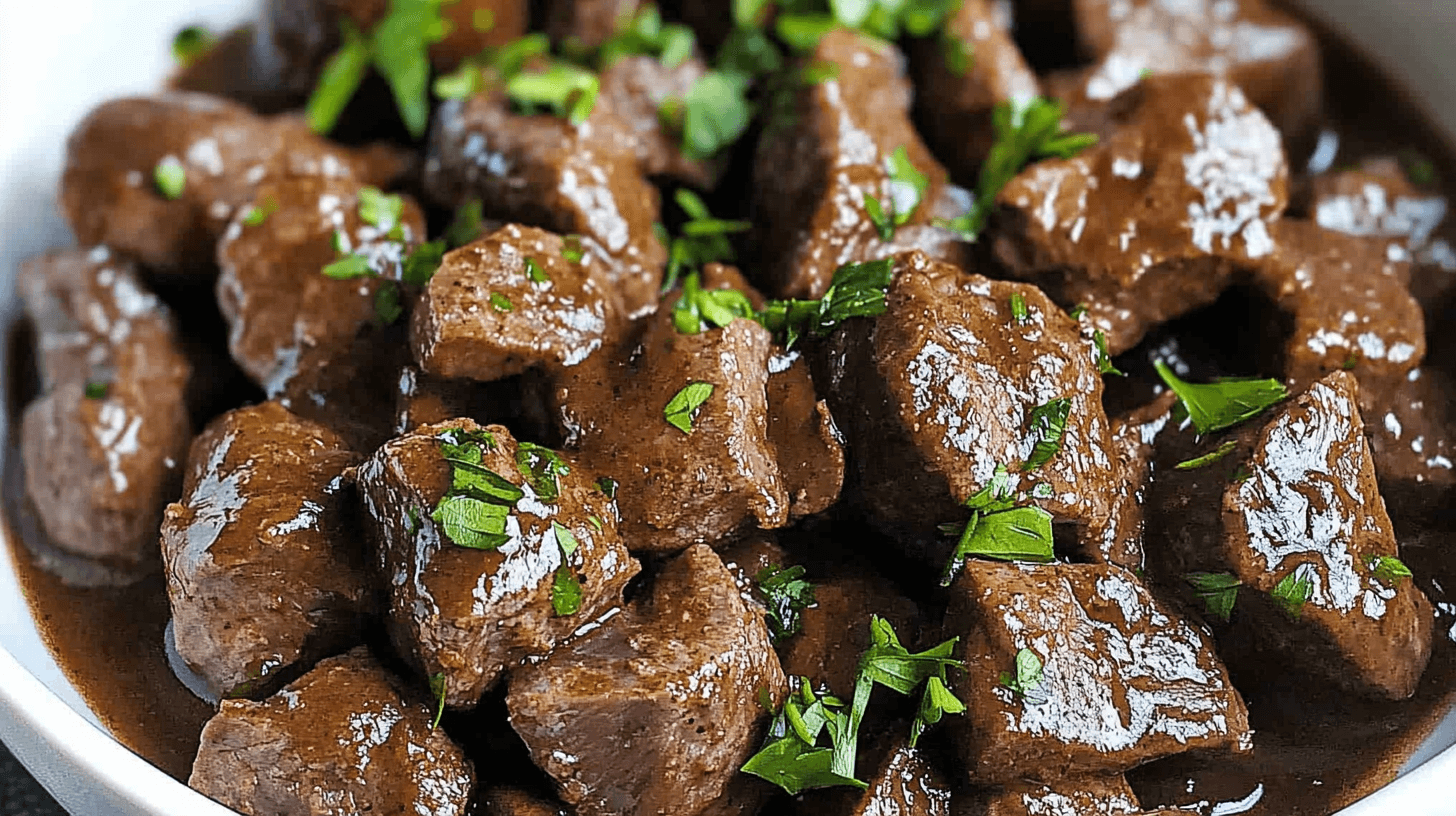Discover a delicious beef heart recipe with expert tips, preparation methods, and flavorful variations that will transform this nutrient-rich cut.
Understanding the Beef Heart Recipe Basics
When home cooks think of organ meats, they often skip the heart. However, the beef heart recipe opens new possibilities for both flavor and nutrition. Indeed, this dish offers a tender and meaty profile that surprises many who try it. Additionally, it contains essential nutrients and pairs well with various sides. Undoubtedly, preparing this special recipe requires a bit of knowledge and confidence. Basically, the more you learn, the simpler and more rewarding the process becomes.
What Makes a Beef Heart Recipe Unique?
Many people hesitate to cook organ meats. Nevertheless, the beef heart recipe stands out because it tastes more like a lean, flavorful steak rather than a strong-tasting offal. Comparatively, beef heart is denser and leaner than many cuts of steak. Accordingly, it benefits from proper marination and careful cooking. Because of its hearty texture, this meat can withstand slow cooking, grilling, and even pan-searing. Eventually, anyone who appreciates a rich beef flavor will find that a well-made beef heart dish provides an unforgettable experience.
Key Ingredients in a Traditional Beef Heart Recipe
When approaching a classic beef heart recipe, certain ingredients elevate the dish. Initially, consider fresh herbs like rosemary, thyme, or oregano. Likewise, spices such as smoked paprika or cumin add depth and aroma. Furthermore, acidic components like red wine vinegar or lemon juice help tenderize and enhance flavor. Consequently, basic aromatics such as garlic, onion, and shallots create a robust foundation. Finally, a high-quality cooking fat—like ghee or clarified butter—improves mouthfeel and taste.
Key elements often include:
- Fresh beef heart, trimmed properly
- Aromatic herbs (rosemary, thyme)
- Garlic and onions for depth
- Acidity (red wine vinegar, citrus)
- Salt and pepper, adjusted to taste
- A small amount of healthy cooking fat
Regional Variations on the Beef Heart Recipe
Cultural influences shape how this dish develops across regions. For example, South American versions, particularly Peruvian anticuchos, marinate sliced beef heart in a spiced vinegar sauce. Meanwhile, in certain European kitchens, cooks simmer heart gently in hearty broths, producing a tender, stew-like consistency. Similarly, North American approaches often involve grilling marinated heart slices over open flames. Each adaptation respects the heart’s robust character, yet adds a distinct culinary identity.
Selecting and Preparing the Beef Heart Recipe
Crafting a delicious beef heart recipe starts with choosing the right ingredients. Indeed, sourcing a high-quality beef heart makes a huge difference. Basically, opt for fresh, pasture-raised meat whenever possible. Moreover, ensure the heart is free of any unpleasant odors. Subsequently, remove tough connective tissues and excess fat before cooking. Indeed, proper trimming ensures even cooking and tenderness.
How to Trim the Beef Heart:
- Place the heart on a clean cutting board.
- Slice away visible fat and gristle.
- Remove any fibrous membranes.
- Rinse and pat dry thoroughly.
- Slice into even portions for consistent cooking.
Cooking Methods for a Perfect Beef Heart Recipe
Although some cooks avoid offal due to complexity, many cooking techniques make preparing a beef heart recipe more approachable. Comparatively, the heart’s dense texture responds well to both quick, high-heat methods and low-and-slow approaches. Equally important is remembering that overcooking can toughen the heart. Conversely, achieving the right doneness results in a tender, succulent meal.
Grilling: A Simple and Flavorful Option
Grilling suits a beef heart recipe because it imparts smoky notes. Initially, marinate thin slices in herbs, garlic, and vinegar for at least an hour. Afterward, place them over medium-high heat. Turn quickly to avoid overcooking. Eventually, the result is charred edges and a juicy interior. Serve with grilled vegetables and a bright chimichurri sauce for balance.
Sautéing or Stir-Frying: Quick and Nutritious
If you prefer speed, sauté or stir-fry the beef heart. Basically, cut it into bite-sized strips. Next, heat a pan with oil until shimmering. Subsequently, add aromatics like onion and garlic, followed by the heart slices. Move swiftly to prevent dryness. Finally, toss in a splash of soy sauce or balsamic vinegar for extra dimension. Serve over rice or noodles and garnish with fresh herbs.
Braising: Tenderizing Tough Cuts
Braising suits thicker slices of heart. Initially, sear the heart pieces in a hot pan with some oil. Then, add broth, red wine, and herbs, ensuring the liquid covers the meat partially. Afterward, simmer gently for at least an hour. Consequently, the heart becomes fork-tender, absorbing the sauce’s flavors. Serve this comforting dish over mashed potatoes or polenta.
The Nutritional Benefits of Eating Beef Heart
Organ meats, especially beef heart, offer an excellent nutrient profile. Indeed, a beef heart recipe provides high-quality protein, essential amino acids, and ample vitamins. Specifically, it is rich in B vitamins, including B12, which supports energy metabolism. Likewise, it contains iron, zinc, and selenium, crucial for immune function. Meanwhile, the heart also provides coenzyme Q10, beneficial for cardiovascular health. Ultimately, incorporating beef heart occasionally can boost overall nutrient intake.
Moreover, eating such nutrient-dense foods can help reduce reliance on expensive supplements. Because beef heart is often more affordable than prime cuts, it represents a cost-effective protein source. Thus, it appeals to budget-conscious cooks who do not want to compromise on nutrition.
Exploring Flavor Pairings and Serving Suggestions
When assembling a beef heart recipe, flavor pairing matters. For instance, the meat’s savory richness complements bright, acidic flavors like chimichurri, citrus salsas, or pickled onions. Equally, earthy vegetables—mushrooms, root vegetables, or dark leafy greens—add depth. Consequently, serve grilled heart with a fresh herb salad and roasted sweet potatoes. Alternatively, braised heart pairs well with creamy mashed potatoes and a robust red wine reduction.
Serving Ideas:
- Grilled beef heart skewers with garlic-herb sauce
- Stir-fried heart with bell peppers, onions, and soy glaze
- Braised heart in a red wine sauce over fluffy polenta
- Shaved heart slices atop a crisp green salad for a unique protein boost
Practical Tips and Techniques for Perfect Results
To master a beef heart recipe, a few practical techniques help ensure consistency. Firstly, always marinate heart slices before grilling to soften the texture. Secondly, slice the meat against the grain for tenderness. Thirdly, use a thermometer to avoid overcooking. Indeed, aim for a medium-rare to medium doneness. Generally, letting the cooked heart rest for a few minutes before slicing helps retain juices.
Additionally, consider flavor-building steps like toasting spices before using them. Likewise, season the meat progressively. Begin with a simple salt and pepper rub. Afterward, layer more complex flavors through sauces or garnishes. Eventually, these small but critical actions transform a challenging ingredient into a restaurant-quality dish.
Applying Creativity: Variations and International Twists
The world of offal cooking is vast, and a beef heart recipe can take many forms. Indeed, different cooking traditions highlight this ingredient in unique ways. For example, in Peruvian cuisine, anticuchos involve skewered, marinated heart pieces grilled to perfection. Meanwhile, French recipes might incorporate finely diced heart into terrines or pâtés. Furthermore, adding spicy North African harissa paste or fragrant Indian spices transforms the dish’s character entirely.
In a fusion approach, marinate heart slices in soy, ginger, and sesame oil. Subsequently, grill and serve them over soba noodles with bok choy. Comparatively, a Middle Eastern-inspired marinade with cumin, coriander, and yogurt brings exotic warmth. Undoubtedly, each variation encourages culinary exploration and adaptability.
Common Mistakes and How to Avoid Them
While making a beef heart recipe is simpler than expected, certain pitfalls can occur. Chiefly, overcooking is the biggest mistake, leading to tough, chewy texture. Likewise, insufficient trimming leaves unpleasant gristle. Moreover, skipping marinade time results in a bland or overly firm final product.
To avoid these errors, basically treat beef heart like lean steak. Season well, marinate as needed, and monitor the cooking time closely. Indeed, a quick sear or controlled braise ensures tenderness. Conversely, allowing the heart to dry out on high heat too long will destroy its delicate balance. Furthermore, always taste and adjust seasonings before serving. Eventually, small refinements guarantee a consistently enjoyable meal.
Storage, Leftovers, and Meal Prep
Because a single beef heart often yields generous portions, plan for leftovers. Afterward, store cooked heart slices in airtight containers in the refrigerator for up to three days. Additionally, consider slicing leftover heart thinly and using it as sandwich filler with mustard and pickles. Another idea is to chop and toss it into a robust pasta sauce or chili. Ultimately, leftover heart can become a versatile meal component, stretching your culinary creativity further.
Freezing raw heart is also possible. Wrap it tightly and freeze for up to three months. When ready to use, thaw it in the refrigerator overnight. This approach helps maintain quality and texture, ensuring you have a premium ingredient ready whenever inspiration strikes.
Special Diets and Substitutions
A beef heart recipe suits various diets, including low-carb and keto. Because heart is lean and nutrient-dense, it fits well into balanced, health-conscious meal plans. Conversely, if you follow a vegetarian or vegan lifestyle, consider plant-based protein substitutes. While no vegetable or legume perfectly mimics heart’s flavor, mushrooms or legumes add some earthy depth to dishes inspired by the original recipe’s seasonings.
For those watching their sodium intake, reduce added salt and rely more on herbs and spices. Likewise, gluten-free diets adapt easily, as most recipes do not involve wheat products. Meanwhile, for dairy-free approaches, use olive oil or ghee instead of butter. Indeed, adjusting seasonings or cooking methods can accommodate many dietary preferences without sacrificing flavor.
Sustainability and Ethical Considerations
Choosing a beef heart recipe aligns with nose-to-tail cooking, reducing food waste. Generally, offal consumption promotes sustainable meat use. Instead of discarding nutritious parts, you incorporate them into your diet. Indeed, this practice respects the animal and contributes to a less wasteful food system. Consequently, selecting pasture-raised or grass-fed beef adds ethical and environmental benefits. Moreover, you support responsible farmers who prioritize animal welfare and land stewardship.
Additionally, offal is often more affordable, making it accessible for individuals who want high-quality protein without breaking the bank. Undoubtedly, eating beef heart can align taste, health, ethics, and budget, creating a multifaceted culinary win.
Pairing Beverages with Beef Heart
When serving a beef heart recipe, beverage choices enhance the experience. Red wines with moderate tannins—like a Merlot or Malbec—complement the heart’s savory depth. Equally, a medium-bodied craft beer, perhaps a brown ale, can offer balance. Alternatively, consider a smoky mezcal cocktail or a simple whiskey highball to pair with grilled heart skewers. Eventually, finding the perfect drink match involves experimentation and personal preference.
Non-alcoholic options work too. A sparkling water with fresh citrus or a tangy kombucha cleanses the palate. Likewise, a robust cold-brew iced tea or a slightly tart fruit shrub can provide a refreshing counterpoint to the dish’s richness.
Frequently Asked Questions (FAQs)
Is eating beef heart healthy?
Yes, eating beef heart can be very healthy. It is rich in protein, vitamins, and minerals. Specifically, it contains B vitamins, iron, zinc, selenium, and coenzyme Q10. These nutrients support energy, immunity, and cardiovascular health. Nevertheless, moderation is key. Consult with a healthcare provider for personalized advice.
Does heart taste like beef?
Heart does taste like beef, although it has a denser, leaner texture. Comparatively, it carries a rich, meaty flavor closer to a lean steak than to other offal. Proper seasoning and cooking methods ensure a pleasantly savory taste without overly gamey notes.
How often should you eat beef heart?
Occasionally incorporating a beef heart recipe into your diet is recommended. Generally, once or twice a month suffices. Because the heart is nutrient-dense, smaller servings can still provide substantial health benefits. Balance it with other protein sources and vegetables for a well-rounded diet.
Is beef heart a byproduct?
Yes, beef heart is considered an organ meat, often classified as a byproduct of the meat industry. However, utilizing these parts reduces waste and promotes sustainability. Choosing to cook with beef heart supports a more nose-to-tail approach, making better use of the entire animal.

